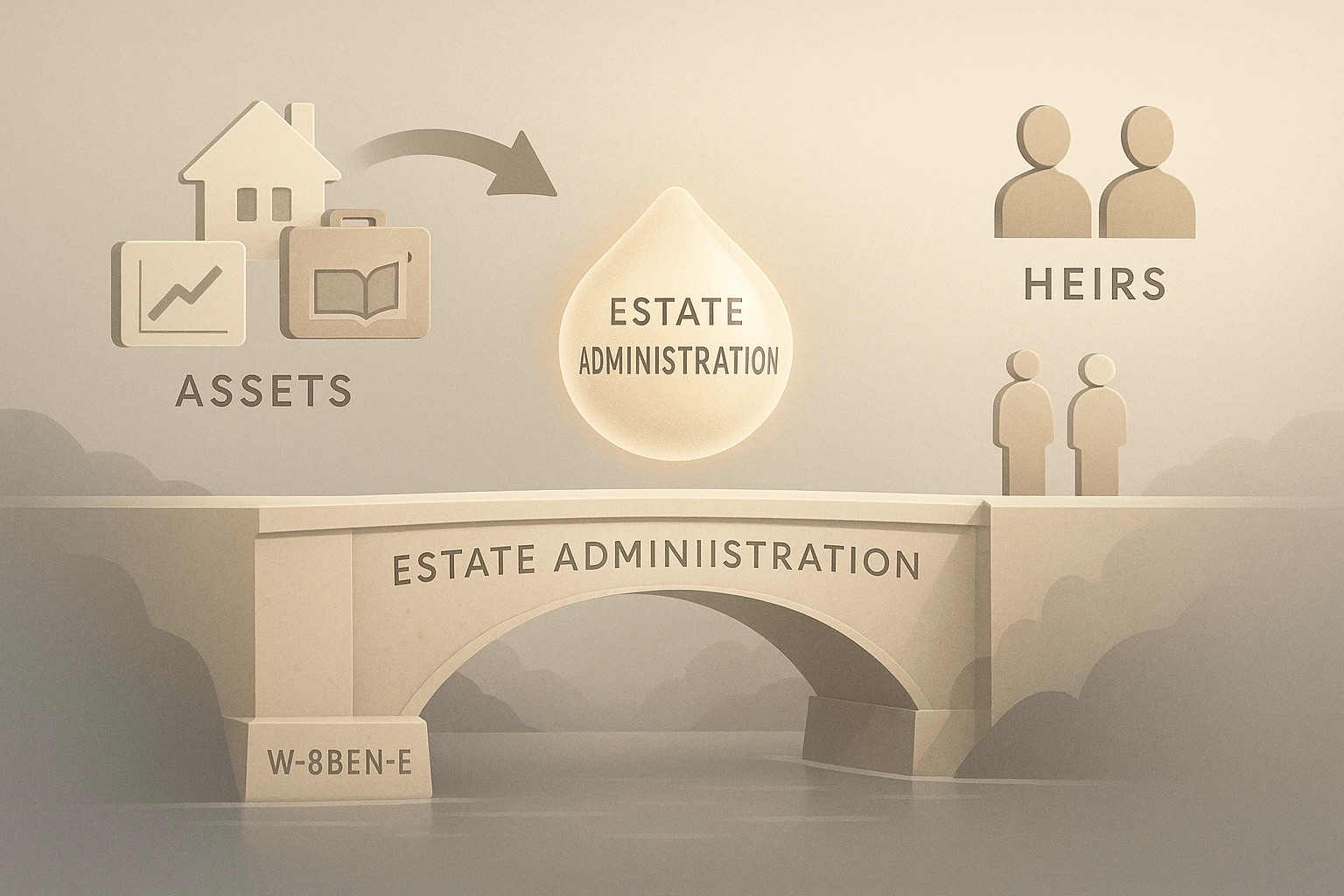W-8BEN-E: A Filing Guide for an Estate

Among the many statuses on Form W-8BEN-E, 'Estate' holds a special place. This status is not used for active companies or trusts, but for a temporary legal entity created after a person's death to manage their assets.
If you are an executor, administrator, or legal representative of a non-U.S. person's estate that receives income from the U.S., this guide will help you correctly fill out Form W-8BEN-E.
What is an Estate in the Context of W-8BEN-E?
In a legal sense, an Estate is the total of all assets (property, money, investments) that belonged to the deceased person. After death, a temporary legal entity—the 'estate'—is created to:
- Collect all assets.
- Pay the deceased person's debts and taxes.
- Distribute the remaining assets to heirs or beneficiaries according to a will or law.
It is this temporary legal entity, represented by its administrator, that fills out Form W-8BEN-E if the estate receives income from U.S. sources (e.g., dividends from stocks owned by the deceased).
The Main Path for an Estate on Form W-8BEN-E
The process of filling out the form for an estate has its own logic, especially at the stage of choosing the FATCA status.
Step 1: Choose Chapter 3 Status
In Part I, Line 4, you check the box for 'Estate.' This choice is the primary identification of your legal entity.
Step 2: Determine FATCA Status in Chapter 4
The next step is to choose the status in Part I, Line 5. For an estate, there are two logical options:
Option A (Most Appropriate): 'Excepted nonfinancial entity in liquidation or bankruptcy'
Why is this suitable? Because the function of an estate is essentially a process of liquidation and distribution. Choosing this status requires completing Part XX. In this section, you certify that the organization (the estate) has filed a plan of liquidation (or an equivalent document), was not a financial institution, and intends to terminate its activities.
Option B (Alternative): 'Passive NFFE'
Why might this be suitable? If the inheritance distribution process is lengthy, and during this time the estate holds assets that generate passive income (stocks, real estate), it can be classified as a passive NFFE. This choice requires completing Part XXVI and possibly Part XXIX (if there are substantial U.S. owners among the heirs).
An estate can claim tax benefits by completing Part III. It's important to note that the right to benefits is based on the tax treaty between the U.S. and the country where the deceased person was a tax resident. In other words, the estate 'inherits' the right to apply the benefits that the person would have had during their lifetime.
Claim of Tax Treaty Benefits (Part III)
The choice between these two statuses depends on the specific circumstances, but the 'in liquidation' option is often a more accurate description of an estate's nature.
Conclusion
Filling out W-8BEN-E on behalf of an estate is a responsible process that requires correct classification of its status. Most often, the path looks like this: Estate (Part I, Line 4) → Excepted NFFE in liquidation (Part I, Line 5) → Complete Part XX. Given the legal nuances related to estate management, we strongly recommend consulting with a lawyer or tax advisor.
Our online service is designed to handle all types of organizations, including specific ones like Estates.
Use our builder to complete all necessary sections of the form step-by-step.
Try our W-8BEN-E Generator